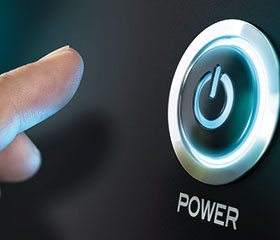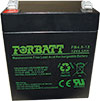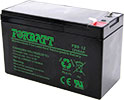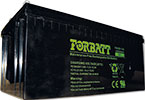

If you are in the electronics manufacturing and production industry, you will be familiar with two buzz words that affect and apply to you more than most: the Internet of Things (IoT) and the 4th Industrial Revolution.
Electronics designers, inventors and engineers need to think in terms of IoT integration for the enhancement of industrial and manufacturing processes or technologies.
A great way to simplify the above two buzz words is this: IoT is a small gear you can turn and turning it moves a massive wheel – an industrial revolution – the 4th Industrial Revolution. IoT is but a single gear that works with other gears for the full revolution. That said, when looking at the design of electronic solutions, it is essential to look at solutions from this level of thinking. This is the edge and your longevity.

As African business owners, inventors, scientists and entrepreneurs, where do we start and how do we get to this level of thinking? How do we use technology to leapfrog as a country and a continent? The simple truth is, we need to involve more minds, many more minds from across the country and the continent. They are the solution to uniquely African problems. Many of the answers will also have global potential. It is not only financially lucrative, but it also changes lives for the better and creates opportunities.
So where do we begin? There are two essential catalysts we must put in place to maximise our opportunities as a continent. The first key is connectivity. A connected continent can solve problems faster and innovate more rapidly. The African Union acknowledges that the continent’s weak data ecosystem needs to be addressed. African countries such as Zambia see this and are growing the market with new mobile licences following their revised telecoms law. Zambian communications minister Brian Mushimba says he is doing this to attract investors and create job opportunities.
With the connection comes the much-needed education for innovation. However, is merely being connected going to lead to knowledge? In the late nineties, Indian entrepreneurs set up the Hole in the Wall project. Young kids in this project got access to a computer in the wall and figured out how to use a PC on their own - and then taught other kids. This and other projects have allowed India to leapfrog the world and they are leading the global programming charge.
Thanks to groups such as SatADSL’s Safari satellite project, Qualcomm, NetHope and others, remote wireless technology is becoming more accessible to communities, development groups and tourists. Imagine the potential we could harness if we as business owners, investors and philanthropists made connectivity, knowledge, and electronic components and peripherals available to remote parts of the country and continent that are connected via satellite and cable.
This leads to the second catalyst – mobile, reliable power.

Mobile, reliable power – Forbatt lead-acid batteries lead the way
Our opportunities in the 4th Industrial Revolution are dead in the water without reliable and portable power. However, thanks to incredible innovations and improved production techniques, solar energy has become an increasingly affordable solution for a continent with an abundance of the vital ingredient: sunshine.
Companies such as Forbatt SA, manufacturer of the Forbatt range of lead-acid batteries, has built some of the most reliable batteries for the energy storage and use on demand. Forbatt lead-acid batteries can be found in large solar projects, UPS systems, in homes and even in mining helmet lights. In the family of batteries, they are the most cost-effective solution, making portable remote power the most affordable option.
Sealed lead-acid batteries are the least expensive battery option per Watt-hour. The manufacturing process of sealed lead-acid batteries is a mature, reliable and well-understood technology. Sealed lead-acid batteries also offer a wide range of capacity options for different applications and equipment. What is more, sealed lead-acid batteries have one of the lowest self-discharge rates in the family of rechargeable battery systems. This means they are not only economical, but they also have two critical abilities: durability and dependability.
When coupled with affordable panels, inverters and solar peripherals, the question about remote reliable power is down to implementation strategies.

Africa’s role in the 4th Industrial Revolution is your opportunity
How do we get the two essential catalysts – connectivity and power – into remote communities, tourist areas and our next generation’s hands? Well, the connectivity drive is well underway. If you missed this investment lift on the ground floor, there are still opportunities further up. Similarly, national portable power solutions are just taking off, another tremendous investment opportunity.
What’s your next big thing? Embracing Industry 4.0 technologies and integrating AI. This requires innovative, creative human input. What can you do? Work with schools, present IoT challenges, challenge the technological limitation and find the best minds. Make connectivity and reliable, portable power a priority. Don’t miss the revolution, it is in the minds of the creatives out there, and it is just beginning.

© Technews Publishing (Pty) Ltd | All Rights Reserved